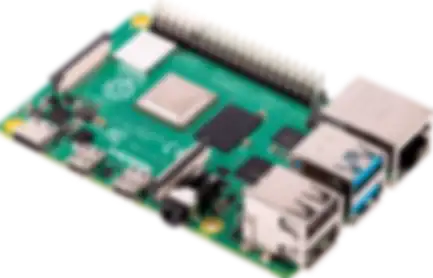Raspberry Pi Digital Signage
Affordable, simple and effective way to equip an existing display with digital signage capabilities.
Affordable, simple and effective way to equip an existing display with digital signage capabilities.
Lumicast offers various options to set up a Raspberry Pi as a digital signage player. In practice, this device proves to be more than sufficient in many cases.
A Raspberry Pi is a small computer with surprising performance capabilities. Since 2012, various iterations of this device have been released and it continues to improve incrementally, while the price of the device always remains low. Currently, you can get the latest Raspberry Pi model, the Raspberry Pi 5, for about €70. In a box with a length of 10cm, width of 5cm and depth of 3cm, you'll find the device with various connection options, including USB ports, an ethernet adapter and a (micro)HDMI output.
Due to the specifications that the Raspberry Pi developers have managed to pack into the small board, it's a very suitable option to serve as a player within a digital signage installation. After intensively working on optimizing the integration of Lumicast on the Raspberry Pi and testing it extensively internally, we can say with certainty that it works perfectly for many purposes. Installing Lumicast is also very easy because we offer a ready-to-use operating system image, making it a matter of "plug 'n play". You can also just download the player itself and install it on the Pi.

Raspberry Pi's are generally very reliable and can easily run your content 24/7.
The Raspberry Pi uses very little power, saving on energy costs!
Use the Raspberry Pi as an affordable solution to give an existing screen a new purpose.
Because the Pi is small, it's easy to hide behind a screen.
Many companies have screens here and there with an image or PowerPoint presentation uploaded via USB stick. While this may work in some cases, we often see that it eventually becomes problematic. For example, it's difficult to keep content up-to-date and it becomes increasingly more work to modify content as more screens are added in different locations.
By placing a Raspberry Pi behind each screen and equipping it with Lumicast, adjusting content becomes easier than ever. See the changes you make in Lumicast appear on every screen in real-time. Additionally, Lumicast unlocks even more options for content that were previously impossible, via apps.
Lumicast offers an OS image with all required components for Lumicast pre-installed. When you install this, you'll see Lumicast appear immediately at startup. This OS image works for the following Raspberry Pi models:
Additionally, we also offer an AppImage for Linux ARM64 and Linux ARMv7l. With this, you can set up your own Raspberry Pi installation and potentially support other models.
We have two different ways to install Lumicast on a Raspberry Pi.
This is the easiest way to install Lumicast on a Raspberry Pi. You download the OS image and install it on the Raspberry Pi.
Read the guide
This method is mainly intended for advanced users who want to install on a Raspberry Pi that's not in the list of supported models.
Read the guide
Start with Lumicast today and experience the advantages of digital signage for your business.